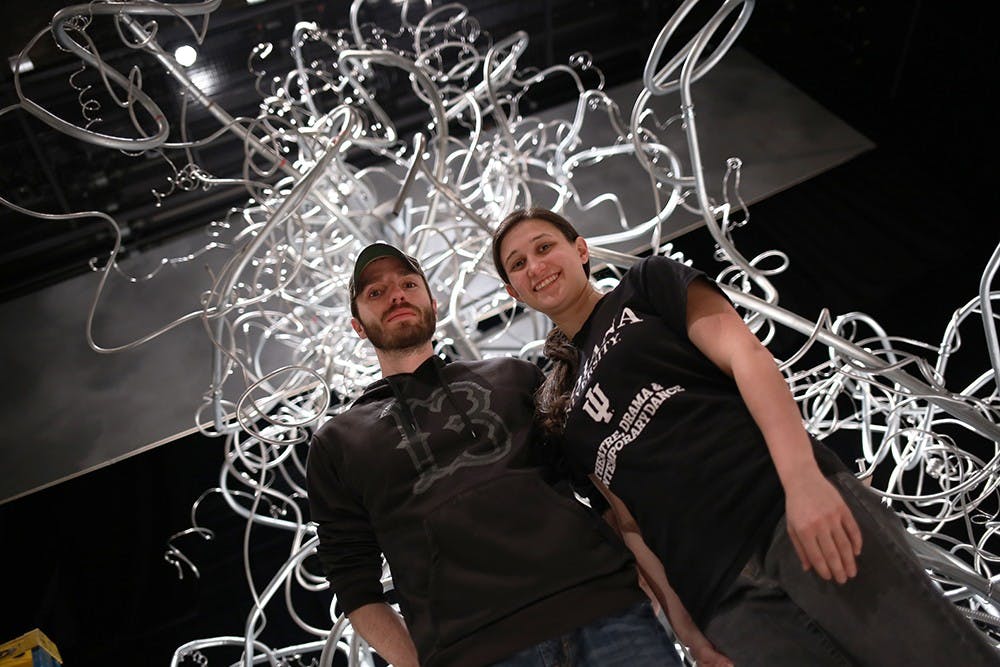The group, including students and faculty, are representing the U.S. in the exhibition. After completely deconstructing the 18-foot-tall installation, the work will be left in storage until April.
The exhibition takes place in June and celebrates the global art of set design, costume design, lighting design and sound design.
Paul Brunner, assistant professor in Theatre Technology in the Theatre, Drama and Contemporary Dance department, led the main creation of the exhibit installation. His selection did not come fast or easy.
“The selection process began in November in 2010,” he said.
Now, his team is composed of 10 people: eight graduate students, one other IU Theatre staff member and himself.
Work started in July, after they received the design concept from Klara Zieglerova, a Czech designer based in New York City. They then worked to transform a design into something real and three-dimensional.
“It’s a lot more organized than it looks,” he said with a laugh.
The exhibit is a swirling mass of wire and metal piping. The center houses a spiral staircase. Curators came a few days ago to place clusters of props, costumes, photos and iPads in the work.
The iPads will play music, show projections and display excess ?photos that may have been too big to print and apply to the ?structure.
The exhibit is going to be interactive, he said.
“People who are looking at the exhibit, they will be able to cut off a piece of wire from a spool and tie it to the exhibit,” he said. “For my world ... it’s got a lot of characteristics of a stage set, but it’s completely different.”
People can walk through it and climb up it using the staircase in the center. It’ll move just a bit, he said, all while being structurally sound.
Also, due to its metallic materials, Brunner said it reflects things around it.
“It just sits there and glimmers at you,” he said. Brunner added the installation will be housed in a “several-hundred-year-old church.” The light in the room will be constantly changing, he said.
“It just comes to life,” ?he said.
Brunner works in set design. For him, the average project revolves around a script. This is not the case this time.
There is no shadow of historical accuracy that he has to restrict himself to while building on stage. He doesn’t have to match anything to the plotline of a drama.
“That can be frightening,” he said. “It’s not tied down to the story of a script.”
Changing vantage points, this installation was created many months in advance and is designed to be unveiled in Prague. Brunner said while he and his team created this exhibit in Indiana, its true home is in Prague.
It will not be technically complete until it is re-assembled there in June. So, he said, the exhibit will be undone and put in boxes. Until they are shipped abroad in April, they will be treated as if they are raw materials.
This deconstruction ?started Thursday and will continue for a couple days. In terms of his estimations, everything will be boxed and stored by the weekend.
Now all that is left to do is wait and plan. When he and his students arrive in June, they will only have four days to bring everything into their allotted space and fully set everything up.
This idea is “very nerve-wracking” for Brunner. To cope, he said he is going to spend the remaining months planning and prepping. In fact, he already has local hardware stores marked off in case something happens at the last minute abroad.
Yet in the end, despite any nerves Brunner has to work through, there is only one thing he wants his exhibit to achieve as an end goal. It should be a source of thought, interaction and conversation. People should spend part of their day mingling with it, he said.
“There’s this unique sort of life about it,” he said.






